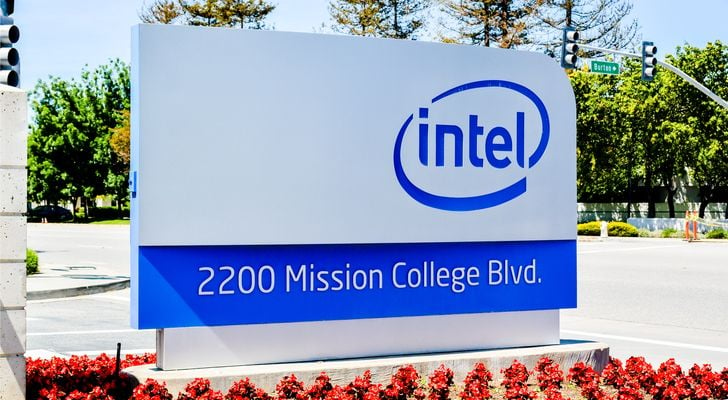I’m sure many shareholders are questioning why Intel (NASDAQ:INTC) dropped so sharply. Intel stock fell 8.6% on Friday. That’s not quite a move on the level of Facebook (NASDAQ:FB) or Twitter (NYSE:TWTR), both of which plunged after their own earnings announcement. But for a company with a $240 billion market cap (still), an 8%+ move is big — and rare.
Yet, there doesn’t seem to be that much bad news in the report. Revenue and earnings per share both handily beat consensus estimates. Weakness in the data center business appears to be the culprit of the decline — but Intel’s revenue in that category still rose 27% year over year. Sales overall rose 15%. Adjusted EPS increased 44%. And Intel stock now trades at barely 11 times next year’s consensus EPS.
It doesn’t seem to add up. And on this site, Luke Lango made the case for buying the dip in Intel stock. It’s a solid argument. INTC is cheap; it’s still a leader in the semiconductor space; and Lango’s price target of $52 suggests reasonable upside in concert with a 2.5% dividend yield.
But I’m not quite as optimistic. I thought INTC, then trading at $51, already had made its run back in April. Back at $47, I’m not sure the discount is quite great enough to offset the potential risks here.
Competition Is Coming
It’s not hard to see why investors focused on Intel’s data center revenue figure. Shares of rival Advanced Micro Devices (NASDAQ:AMD) soared after a blowout quarter announced the day before Intel’s release. AMD’s strength clearly was driven by its EPYC processors — which are targeting that very same data center market.
AMD’s unexpected strength in that category, along with Intel’s admittedly modest miss relative to expectations, creates an obvious narrative here. AMD is taking share in a market in which it had essentially zero presence until recently. No less than former Intel CEO Brian Krzanich has admitted that AMD could wind up with 15-20% market share.
And AMD isn’t even the biggest worry. That title goes to Nvidia
(NASDAQ:NVDA), which grew its data center revenue 71% in its most recent quarter. Nvidia’s $700 million in data center sales pale, at the moment, to the $5.5 billion generated by Intel’s Data Center Group. And — for now — demand is strong enough that the rising tide is lifting all boats.
Still, in a key category, investors clearly are worried that Intel’s boat has a leak or two (to stretch the metaphor). For a business driving roughly 30% of Intel sales, that’s not something that can be ignored.
Execution Needs to Be Better
Intel’s ability to answer that competition is going to come down to its ability to execute and innovate. But there, too, concerns are rising. The company’s move to 10nm was delayed by a year, into the second half of 2019. As Merrill Lynch analysts pointed out, that opens the door for not just AMD and Nvidia, but Taiwan Semiconductor (NYSE:TSM) and Xilinx (NASDAQ:XLNX).
Meanwhile, Intel still lacks a CEO after Krzanich resigned last month. Though many shareholders shrugged at the news — and some were downright happy — I still think, as I argued at the time, that the loss is bad news for Intel. Whatever the criticisms of Krzanich — and there are plenty — Intel is navigating a challenging period and aggressive competitors without a permanent chief executive. Clearly, at least in the near-term, that is making investors uncomfortable.
Is Intel Stock Cheap Enough?
All that said, there’s a case that at least some, if not all, of the risks are baked into the INTC stock price at this point. Again, the stock trades at barely 11 times 2019 consensus EPS. The PC business looks worrisome, given weak unit growth worldwide, and AMD’s efforts with its Ryzen line. But “PC-centric” revenue rose 6% in Q2, a solid performance that seems to suggest Intel can still squeeze some growth out of its CPUs.
Data center revenue still is growing. Mobileye, acquired last year, grew revenue 37%, and the automotive opportunity is enormous longer-term. The ‘Internet of Things’ and FPGAs (field-programmable gate arrays) offer additional secular growth tailwinds.
Still, about half of Intel revenue still comes from PCs — and that business could fade longer-term. And at the moment, as a business, it’s hard to argue that Intel is living up to its reputation. The news may not be quite as bad as the stock price suggests — but it isn’t great. There are real risks here, and some questions that Intel will need to answer over the next few quarters.
As of this writing, Vince Martin has no positions in any securities mentioned.

